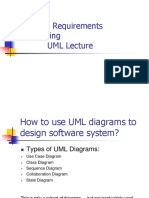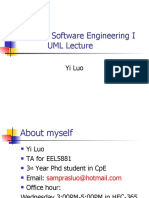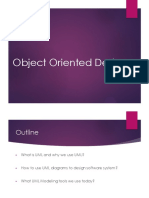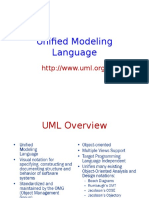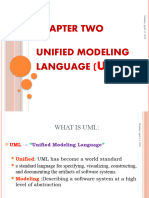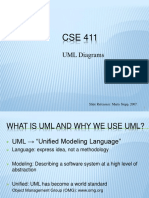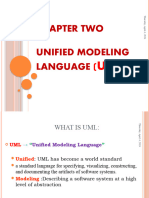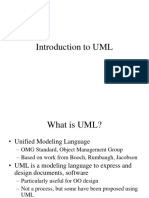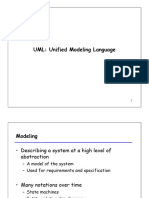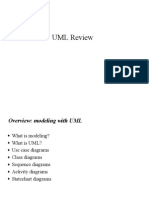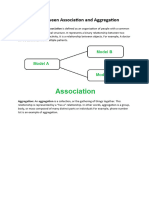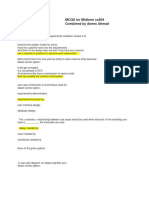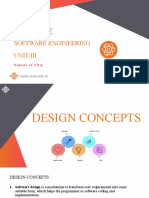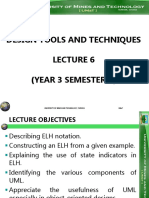100% found this document useful (1 vote)
111 views38 pagesUML Lecture Fall09
The document provides an overview of UML (Unified Modeling Language) including what UML is, its history and goals, common UML diagrams like use case diagrams, class diagrams, sequence diagrams, and interaction diagrams, and gives examples of how to represent various modeling elements in each diagram type. It also lists sources that the presentation materials were drawn from to teach about UML.
Uploaded by
nnbphuong81Copyright
© Attribution Non-Commercial (BY-NC)
We take content rights seriously. If you suspect this is your content, claim it here.
Available Formats
Download as PPT, PDF, TXT or read online on Scribd
100% found this document useful (1 vote)
111 views38 pagesUML Lecture Fall09
The document provides an overview of UML (Unified Modeling Language) including what UML is, its history and goals, common UML diagrams like use case diagrams, class diagrams, sequence diagrams, and interaction diagrams, and gives examples of how to represent various modeling elements in each diagram type. It also lists sources that the presentation materials were drawn from to teach about UML.
Uploaded by
nnbphuong81Copyright
© Attribution Non-Commercial (BY-NC)
We take content rights seriously. If you suspect this is your content, claim it here.
Available Formats
Download as PPT, PDF, TXT or read online on Scribd
/ 38



